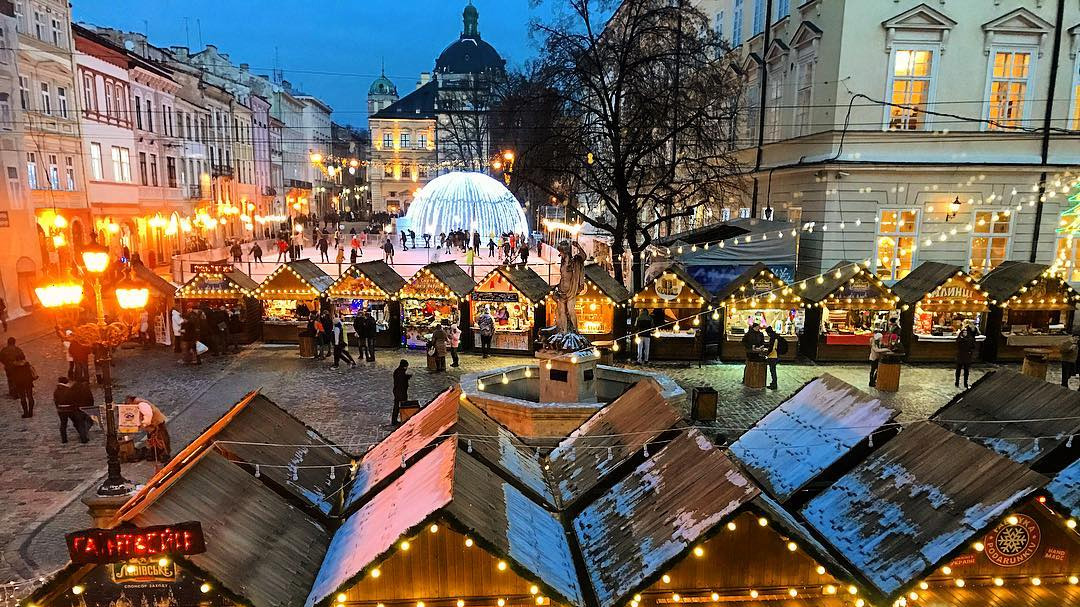Christmas and New Year were always vividly celebrated in Lviv, but Christmas was given much more attention. It was Christmas, not New Year, which was the main holiday for Lviv residents. «From the founding of Lviv and throughout the following centuries, our city was inhabited by different nationalities, therefore Christmas and New Year were celebrated differently: Christmas – from January 7 to 9, and New Year, as a result of the religious split in Europe – on March 1. Until then, September 1 was considered the beginning of the year. After the split, the Catholics continued to celebrate the New Year on September 1, and the Orthodox – on March 1, but after the adoption of the Union, this date was moved to January 14», said Yaroslav Byshkevych.
Since the 14th century, when Lviv was under Poland and more Poles began to move there, they began to celebrate according to the Catholic calendar: December 6 – St Nicholas Day, December 25 – Christmas, January 6 – Epiphany. Lviv Armenians celebrated both Christmas and Epiphany on January 6.
When Pope Gregory XIII introduced a new calendar, according to which the year begins on January 1, it is clear that Catholics in Lviv switched to it. In 1700, the Galician Diocese adopted the Union, so the New Year in Lviv also began to be celebrated on January 1 (according to the previous Julian calendar – January 14). At the same time, the Orthodox continued to consider March 1 as the beginning of the year.
Changes took place after our lands went to Austria. In 1781, Joseph II, by his decree, equalized the rights of all Christians. And in the Austrian monarchy, the New Year began to be celebrated on January 1, only the Orthodox – on January 14. Jews started to celebrate Hanukkah much more openly.
At the end of the 18th century, thanks to the Habsburgs, Lviv residents adopted the European tradition of putting up a Christmas tree, which was started by Protestants in Germany.
In 1817, the Kaiser of the Austrian Empire, Franz Joseph, ordered to put up a Christmas tree in the imperial palace in honour of the birth of the princess. Therefore, according to the order, state government officials also began to put up the Christmas tree, and since the people of Lviv were also Franz’s subjects at that time, they also started putting up Christmas trees on the eve of December 25. Some people used to decorate their homes with Christmas tree branches. Over the years, the tradition of putting up a Christmas tree has spread. By the middle of the 19th century, it was already a city tradition. Thus, the Christmas tree in Lviv became a symbol of the winter holidays for all the townspeople. Everyone, regardless of denomination, decorated it with a star.
«Sometimes I heard that the Christmas tree tradition was brought from Russia. Only ignorant people can say that. During the Russian occupation of 1914–1915, the authorities forbade putting up a Christmas tree precisely because the Russian Orthodox Church convinced Nikolai II that it was an evangelical symbol», emphasized Yaroslav Byshkevych.
However, with the first arrival of Muscovites in 1939, Ded Moroz was added to the Christmas tree. At first, he became an addition to St. Nicholas, since they did not dare to replace him immediately. During the German occupation, Ded Moroz was eliminated. The Germans also forbade celebrating together with Jews.
Later, as Yaroslav Byshkevych aptly says, Santa Claus was sent to Europe, St. Nicholas to Siberia, and we were left with Ded Moroz with some incomprehensible Snegurochka (it is not clear whether it was a daughter or a granddaughter).
Balls and fairs became another important feature of the Christmas period in Lviv. Balls began at Christmas and continued until the beginning of Lent. And the fairs were organized in different locations: near the synagogue, on the Rynok Square, near the Bernardine Church, and the Skarbek Theater... They started on Agnesa Day, January 21, and lasted for about two weeks. There you could buy everything: spices, honey, wax, carpets, carriages, fur coats, horses, carts. People’s festivities were also organized at these fairs.
